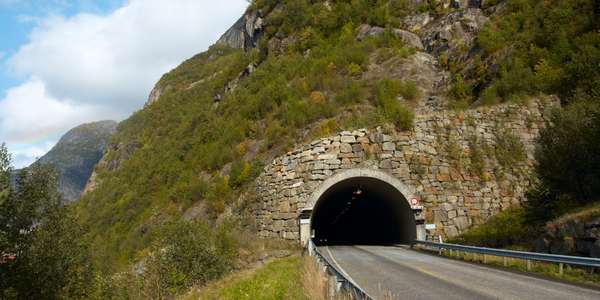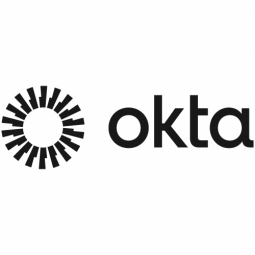Customer Company Size
Large Corporate
Country
- France
Product
- Okta Identity Cloud
- G Suite
- Salesforce
- Workday
Tech Stack
- Single Sign-On
- Multi-factor Authentication
- Universal Directory
- Lifecycle Management
Implementation Scale
- Enterprise-wide Deployment
Impact Metrics
- Productivity Improvements
- Customer Satisfaction
- Digital Expertise
Technology Category
- Cybersecurity & Privacy - Identity & Authentication Management
- Platform as a Service (PaaS) - Connectivity Platforms
- Application Infrastructure & Middleware - API Integration & Management
Applicable Industries
- Mining
- Automotive
- Construction & Infrastructure
Applicable Functions
- Business Operation
- Human Resources
Services
- System Integration
- Cybersecurity Services
- Software Design & Engineering Services
About The Customer
Imerys is a leading global mineral company with a history dating back to 1880. The company has grown significantly through acquisitions and now operates in 40 countries with over 220 sites worldwide. Imerys serves a diverse range of industries, including automotive, construction, and consumer packaging, by providing essential minerals that are integral to various manufacturing processes. Under the leadership of CEO Alessandro Dazza, Imerys is focused on evolving its offerings to better support its customers' needs. The company is committed to digital transformation to enhance its operational efficiency and customer service.
The Challenge
Imerys, a large mineral company with operations in 40 countries and over 220 sites, faced a fragmented IT infrastructure due to its growth through mergers and acquisitions. The company needed to unify its IT systems to provide consistent access to key applications for its 13,000 employees, regardless of their location or role. The challenge was to implement a secure, cloud-based infrastructure that would facilitate the adoption of new applications and improve lifecycle management, while also ensuring robust security measures to protect against fraudulent access.
The Solution
To address its IT challenges, Imerys chose Okta as its identity and access management (IAM) solution. The company implemented Okta's Single Sign-On and Multi-factor Authentication to provide secure and easy access to key applications like G Suite, Salesforce, and Workday. This integration allowed Imerys to streamline user account management and improve security by preventing unauthorized access. Okta's Lifecycle Management and Universal Directory features enabled Imerys to automate user onboarding and offboarding processes, ensuring that user accounts are consistently up-to-date. The Okta Professional Services team supported Imerys in integrating these solutions, allowing the company to manage its IT infrastructure more efficiently and securely.
Operational Impact
Quantitative Benefit

Case Study missing?
Start adding your own!
Register with your work email and create a new case study profile for your business.
Related Case Studies.

Case Study
IoT System for Tunnel Construction
The Zenitaka Corporation ('Zenitaka') has two major business areas: its architectural business focuses on structures such as government buildings, office buildings, and commercial facilities, while its civil engineering business is targeted at structures such as tunnels, bridges and dams. Within these areas, there presented two issues that have always persisted in regard to the construction of mountain tunnels. These issues are 'improving safety" and "reducing energy consumption". Mountain tunnels construction requires a massive amount of electricity. This is because there are many kinds of electrical equipment being used day and night, including construction machinery, construction lighting, and ventilating fan. Despite this, the amount of power consumption is generally not tightly managed. In many cases, the exact amount of power consumption is only ascertained when the bill from the power company becomes available. Sometimes, corporations install demand-monitoring equipment to help curb the maximum power demanded. However, even in these cases, the devices only allow the total volume of power consumption to be ascertained, or they may issue warnings to prevent the contracted volume of power from being exceeded. In order to tackle the issue of reducing power consumption, it was first necessary to obtain an accurate breakdown of how much power was being used in each particular area. In other words, we needed to be able to visualize the amount of power being consumed. Safety, was also not being managed very rigorously. Even now, tunnel construction sites often use a 'name label' system for managing entry into the work site. Specifically, red labels with white reverse sides that bear the workers' names on both sides are displayed at the tunnel work site entrance. The workers themselves then flip the name label to the appropriate side when entering or exiting from the work site to indicate whether or not they are working inside the tunnel at any given time. If a worker forgets to flip his or her name label when entering or exiting from the tunnel, management cannot be performed effectively. In order to tackle the challenges mentioned above, Zenitaka decided to build a system that could improve the safety of tunnel construction as well as reduce the amount of power consumed. In other words, this new system would facilitate a clear picture of which workers were working in each location at the mountain tunnel construction site, as well as which processes were being carried out at those respective locations at any given time. The system would maintain the safety of all workers while also carefully controlling the electrical equipment to reduce unnecessary power consumption. Having decided on the concept, our next concern was whether there existed any kind of robust hardware that would not break down at the construction work site, that could move freely in response to changes in the working environment, and that could accurately detect workers and vehicles using radio frequency identification (RFID). Given that this system would involve many components that were new to Zenitaka, we decided to enlist the cooperation of E.I.Sol Co., Ltd. ('E.I.Sol') as our joint development partner, as they had provided us with a highly practical proposal.

Case Study
Integral Plant Maintenance
Mercedes-Benz and his partner GAZ chose Siemens to be its maintenance partner at a new engine plant in Yaroslavl, Russia. The new plant offers a capacity to manufacture diesel engines for the Russian market, for locally produced Sprinter Classic. In addition to engines for the local market, the Yaroslavl plant will also produce spare parts. Mercedes-Benz Russia and his partner needed a service partner in order to ensure the operation of these lines in a maintenance partnership arrangement. The challenges included coordinating the entire maintenance management operation, in particular inspections, corrective and predictive maintenance activities, and the optimizing spare parts management. Siemens developed a customized maintenance solution that includes all electronic and mechanical maintenance activities (Integral Plant Maintenance).

Case Study
Splunk Partnership Ties Together Big Data & IoT Services
Splunk was faced with the need to meet emerging customer demands for interfacing IoT projects to its suite of services. The company required an IoT partner that would be able to easily and quickly integrate with its Splunk Enterprise platform, rather than allocating development resources and time to building out an IoT interface and application platform.










